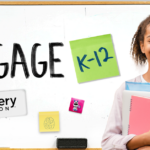Originally published in the March/April 2020 issue of AC&E/Equity & Access
School and classroom environments exert a powerful influence on learning. School is where students develop a sense of their own identity and agency and learn to navigate challenges inside and outside the classroom.
Social-emotional learning supports equity and access because belonging to a caring, inclusive community of learners encourages all students to grow socially, emotion- ally and academically. This sense of community and inclusiveness motivates and empowers students to be fully engaged and enables schools to build on the assets that each student possesses.
However, social-emotional learning is not about “fixing” students or promoting dominant culture values. And it entails more than simply developing the social skills to work with others and the emotional skills to manage one’s emotions and self-regulate behavior. Rather, at its heart, social-emotional learning is about nurturing empathy, taking another person’s perspective, appreciating the richness of diversity, and entering constructive dialogue to resolve differences.
In addition, through professional development in social-emotional learning, educators can become aware of their implicit bias and are supported in creating conditions where families feel safe and respected. In affirming and valuing human connectedness, culturally inclusive and identity-safe classroom communities promote a sense of belonging and eliminating barriers to build quality education, particularly for traditionally underserved students. Thus, equity is both the lifeblood and the outcome of social-emotional learning.
Its goal is to provide culturally inclusive, identity-safe class- room communities that enable students to experience and understand the impact of their actions—or their failure to act—on others. In its fullest context, social-emotional learn- ing is about developing a social consciousness and sense of social responsibility, guided by a moral compass that empowers one to make ethically-grounded decisions.
Social-emotional learning will not address all equity disparities, many of which arise from inequitable funding, inequitable distribution of talent and other resources, and historic institutional bias. However, social-emotional learn- ing helps build an asset-based approach that affirms students’ strengths and cultural identities and appreciates the lived experiences they bring to the classroom.
It creates fair and just environments where all students are valued and where students who learn differently or who have experienced trauma or the stress of growing up in poverty are fully included and supported.
Through the relationships that students develop, the competencies they acquire, and the support they experi- ence within caring classroom environments, social-emo- tional learning not only serves these students but models how an inclusive and respectful community can bring compassion, responsibility and equity to life in the world around them.
The American Consortium for Equity in Education, publisher of the "Equity & Access" journal, celebrates and connects the educators, associations, community partners and industry leaders who are working to solve problems and create a more equitable environment for historically underserved pre K-12 students throughout the United States.
- American Consortium for Equity in Educationhttps://ace-ed.org/author/admin/
- American Consortium for Equity in Educationhttps://ace-ed.org/author/admin/April 23, 2025
- American Consortium for Equity in Educationhttps://ace-ed.org/author/admin/
- American Consortium for Equity in Educationhttps://ace-ed.org/author/admin/







